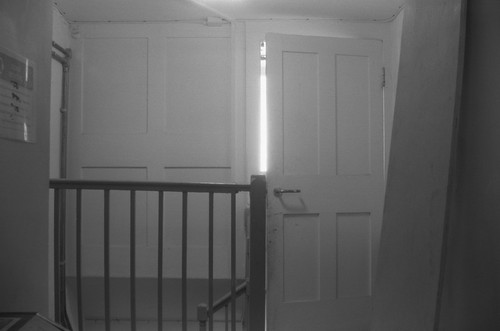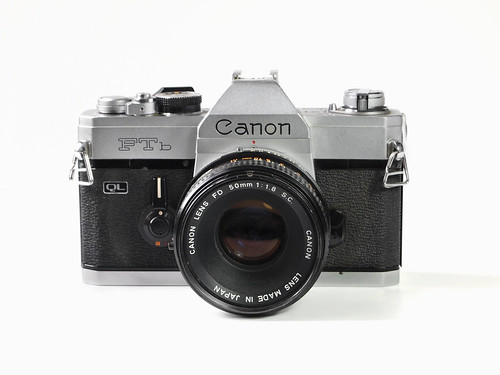 |
| Canon FTb-N 35mm SLR camera |
The evolution of Canon's F-series SLR cameras began with the FX and FP models from 1964; the lens mount was redesigned with the Canon F-1 in 1970. The FTb of 1971 has this newer FD mount, but the name derives from the earlier Canon FT QL of 1966: the FTb (and FTb-N) was an upgrade of the FT QL with the new FD lens mount. The "improved" FTb-N model has sufficiently small revisions that would appear not to be distinct enough to have the N engraved on the camera body. Canon also produced a simplified version of the camera for overseas markets, released as the TX in 1975.
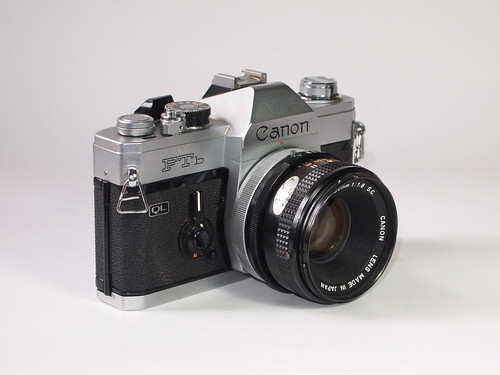 |
| Canon FTb-N with 50mm f1.8 lens |
The code printed inside this example confirms it was made in December 1974 in Canon's Fukushima plant. Having previously used Canon's A series SLR cameras, mostly the A-1, there are some similarities in design and feel to the FTb-N. It is bigger and boxier than the A series, and notably taller in the body, which hints at its design being older, bridging the gap between the first generation of Japanese SLR cameras, and the later 1970s iterations with more compact, refined designs. The FTb-N does share the same lens mount with the later A series, providing compatibility with all of Canon's FD lenses; in addition, the FTb-N can also use FL and R series lenses but without full aperture metering.
The FTb-N I was given came with the standard, older breech-lock f1.8 50mm FD lens; it also had a Vivitar 70-200mm zoom and a Canon 135mm lens which, unfortunately, was cloudy with fungus. Most of the functions on the FTb-N are very much familiar classic SLR territory: manual focus, single stroke film advance, cloth focal plane shutter with speeds of 1 second to 1/100th and 'B', threaded shutter release with a lock position (that can be used as a 'T' setting), manual rewind, hot shoe and PC flash connectors.
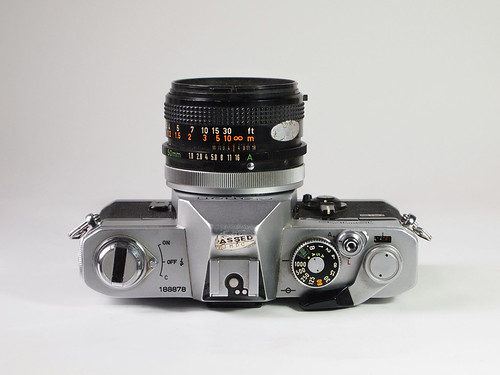 |
| Canon FTb-N top plate |
Although the 'new' model status of the FTb-N isn't marked on the camera body, the QL badge stands for Canon's Quick Load system: a hinged plate inside the camera assists accurate loading. The film leader has to be placed up to a red mark inside the camera, and then the plate folds flat on the the film, designed to make loading fool-proof. When advanced, a series of rotating sprung rubber feet use friction against this internal plate to pull the film into the take-up chamber. In practice, I always check 35mm film is correctly loaded by watching for the rewind crank turning when film is advanced; the QL system removes the necessity for slipping the end of the film into a slot as with most 35mm cameras, which can sometimes be fiddly. Canon used the QL system on a number of cameras, both SLRs and rangefinders, for a number of years, but I imagine the extra complexity in production balanced against the perceived ease of loading proved of insufficient benefit, and the feature wasn't used on the A-series SLRs.
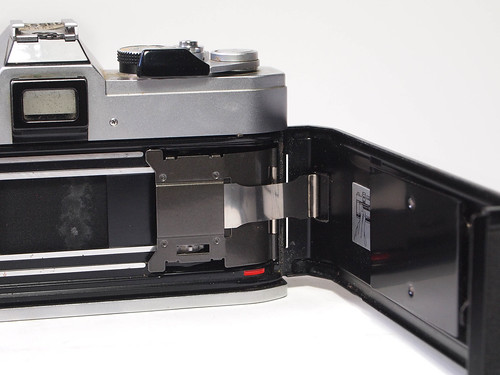 |
| Canon Quick-Load system |
As well as the QL system, another interesting design feature of the FTb-N is its multi-function stop-down/self-timer lever: pushing the lever towards the lens stops down the selected aperture; rotating this 180º away from the lens sets the self-timer; under the lever is a second, smaller lever, which selects 'L' to lock the stop-down lever, 'M' to lock up the instant return mirror, or a white dot for 'unlocked' functions.
Using the FTb-N was very much like experiencing a simpler antecedent to the far more sophisticated Canon A-1 which I used for most of my 35mm photography for many years: most of the user controls, although less advanced, are in much the same places. The largely metal, mechanical camera feels quite solidly made in use, and its relative simplicity ensures that there are few distractions when shooting with the FTb-N; one of the few aspects of the camera that wasn't entirely to my liking was its focus screen - having been used to shooting SLR cameras with split central image circles for focussing, the FTb-N just has a microprism patch in the centre with a slightly darker rectangle around it to indicate the meter area, this I found makes fine focussing take just a little more time and attention than the clarity of a split image.
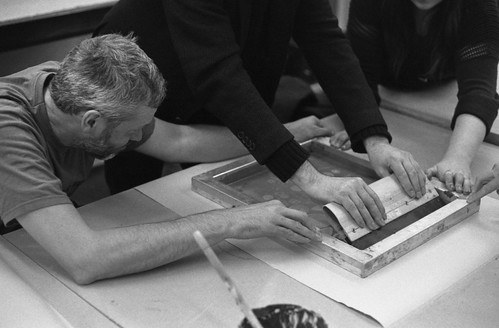 |
| Canon FTb-N (50mm f1.8 lens) with Eastman Double-X film |
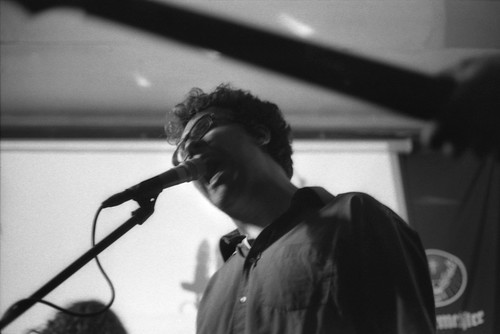 |
| Canon FTb-N (50mm f1.8 lens) with Ilford HP5 Plus at 1600 |
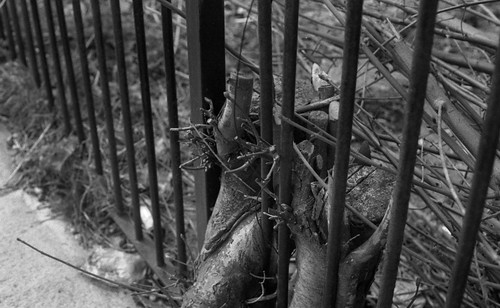 |
| Canon FTb-N (50mm f1.8 lens) with Ilford Mark V Motion Picture film |
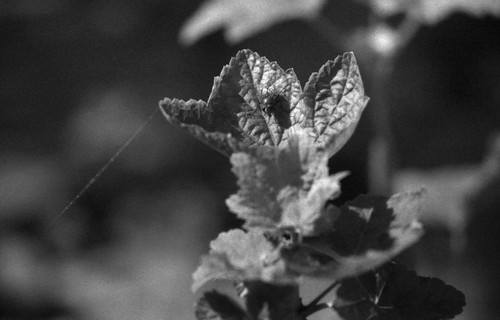 |
| Canon FTb-N with Ilford Mark V Motion Picture film and Vivitar 70-200mm zoom lens |
Canon FTb-N page on the Canon Camera Museum
Classic Cameras - FTb-N
Photoethnography's Canon FTb page
Canon FTb page on Camera-Wiki

